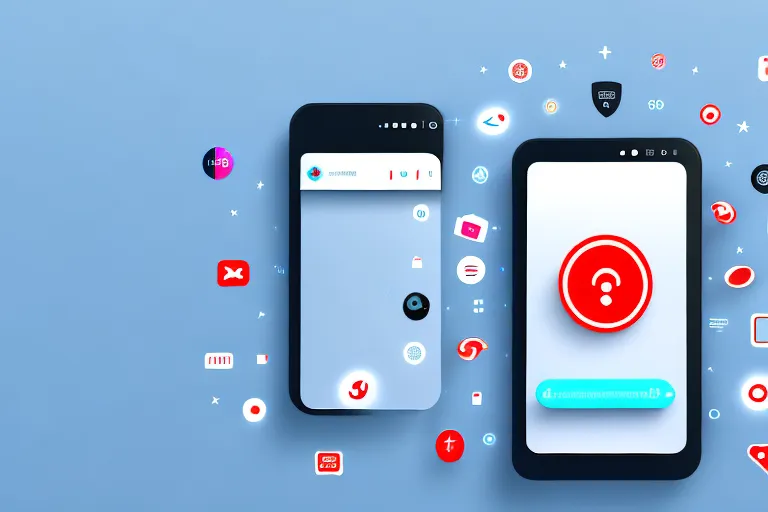Text messaging has come a long way since the early days of basic SMS. With the advent of Rich Communication Services (RCS) messaging, a new era of texting has begun. This powerful technology offers a wide range of enhanced features and capabilities that transform the way we communicate through text. In this article, we will delve into the world of RCS messaging, exploring its history, benefits, and the immense potential it holds for marketers.
Understanding RCS Messaging: The Future of Texting
Before we dive into the advantages and possibilities of RCS messaging, let's take a brief look at its origins and implementation. RCS, also known as "Chat," is a communication protocol designed to replace traditional SMS messaging with a more dynamic and interactive experience. It was first introduced by the GSMA (Global System for Mobile Communications Association) in 2008, but it took some time for widespread adoption.In recent years, RCS messaging has gained momentum, thanks to support from major mobile carriers and tech giants like Google. The goal is to bring modern messaging capabilities, such as read receipts, typing indicators, and multimedia sharing, to all Android devices.
A Brief History of RCS Implementation
The journey towards RCS adoption has been a gradual one. Initially, carriers had to implement RCS individually, which created inconsistent experiences and limited availability across networks. However, the industry recognized the need for a unified approach, leading to the formation of the Cross-Carrier Messaging Initiative (CCMI).The CCMI aims to accelerate RCS implementation by establishing standards and working towards a seamless cross-carrier messaging experience. With the support of major carriers, including AT&T, Sprint, T-Mobile, and Verizon, RCS messaging is poised to become the new standard for texting.One of the challenges in implementing RCS messaging was the need for collaboration among different stakeholders. Carriers, device manufacturers, and messaging app developers had to work together to ensure compatibility and interoperability. This required extensive testing and refinement of the protocol to ensure a smooth user experience across various devices and networks.Over time, the adoption of RCS messaging has grown steadily. Carriers have been rolling out support for RCS on their networks, and smartphone manufacturers have been integrating RCS capabilities into their devices. This widespread support has paved the way for a more consistent and reliable RCS messaging experience for users.
The Benefits of RCS Messaging for Marketers
As the popularity of RCS messaging continues to grow, marketers are beginning to realize its tremendous potential. Here are some key benefits that make RCS an attractive tool for engaging customers:
- Enhanced Branding: With RCS, marketers have access to rich media and visual assets, allowing for creative and immersive brand experiences. They can incorporate images, videos, and interactive elements to capture the attention of customers and create a memorable brand presence.
- Improved Customer Engagement: RCS messaging enables two-way communication with customers, allowing for real-time feedback, surveys, and interactive elements. Marketers can gather valuable insights and feedback from customers, enabling them to tailor their messaging and offerings to better meet customer needs.
- Increased Conversion Rates: By leveraging features like rich cards, suggested replies, and carousels, marketers can provide seamless and convenient ways for customers to take action. They can include buttons and links that direct customers to specific products, services, or landing pages, increasing the likelihood of conversions and sales.
- Personalized Experiences: RCS allows marketers to tailor messages based on customer preferences, past interactions, and location data, leading to more relevant and impactful communication. By delivering personalized offers and recommendations, marketers can enhance customer satisfaction and loyalty.
With RCS messaging, marketers have the opportunity to create highly engaging and interactive campaigns that go beyond traditional text-based messaging. The ability to incorporate multimedia content, gather real-time feedback, and provide personalized experiences opens up new avenues for customer engagement and brand building.
RCS vs. SMS: Unveiling the Differences
Now that we understand the potential benefits of RCS messaging, let's compare it to the traditional SMS messaging we've been familiar with for years.RCS messaging surpasses SMS in several ways, offering a more engaging and interactive user experience. Here are some advantages that set RCS apart:
Exploring the Advantages of RCS Messaging
1. Rich Media: Unlike SMS, which is limited to text only, RCS allows for the sharing of high-quality images, videos, audio files, and other multimedia content.2. Interactive Features: RCS messaging supports interactive elements like buttons, carousels, and suggested replies, enabling users to engage with content and take immediate action without leaving the messaging app.3. Read Receipts and Typing Indicators: With RCS, users can see when their messages have been received and read, creating a more transparent and real-time communication experience.4. Secure Communication: RCS messaging utilizes end-to-end encryption, ensuring that conversations remain private and protected from unauthorized access.
The Road to RCS: When Will You Get It?
After learning about the exciting features of RCS messaging, you may be wondering when it will be available to you. The rollout and availability of RCS vary across regions and mobile carriers.
Availability of RCS Messaging in the United States
In the United States, major carriers like AT&T, T-Mobile, Verizon, and Sprint have already implemented RCS messaging for their subscribers. However, the availability of RCS features may depend on the device, operating system, and specific carrier plan.If you're eager to experience RCS messaging, make sure you have a compatible device and keep an eye out for software updates and carrier announcements.
Who's on Board with RCS Messaging?
With RCS messaging gaining momentum, various stakeholders in the mobile industry have shown their support for this advanced messaging technology.
The Cross-Carrier Messaging Initiative: Driving RCS Adoption
The Cross-Carrier Messaging Initiative (CCMI) is a collaborative effort between major carriers, including AT&T, Sprint, T-Mobile, and Verizon. Its primary goal is to drive RCS adoption and establish a consistent and seamless messaging experience across networks.Through the CCMI, carriers are working together to implement RCS and provide a unified messaging platform for users. This initiative represents a significant step towards the widespread adoption of RCS messaging and the realization of its full potential.
Enabling RCS Messaging: A Step-by-Step Guide
Now that we understand the potential of RCS messaging and the support it has garnered, let's explore how you can enable RCS on your device.1. Check Device Compatibility: Make sure your device is compatible with RCS by checking the manufacturer's specifications or reaching out to your device provider.2. Update Your Messaging App: Ensure that you have the latest version of your messaging app installed on your device. If necessary, visit the respective app store and update the app.3. Enable Chat Features: Open your messaging app and navigate to the settings menu. Look for the option to enable Chat or RCS features. Toggle the switch to activate RCS messaging on your device.4. Enjoy the Benefits of RCS: Once enabled, you can start experiencing the enhanced features and capabilities of RCS messaging. Enjoy rich media sharing, interactive content, and seamless communication with friends, family, and businesses.
Unlocking the Marketing Potential of RCS Messaging
Now that we have explored the basics of RCS messaging, let's take a closer look at how marketers can leverage this technology to drive results and engage customers effectively.
Easy Verification: Building Trust with Customers
RCS messaging offers enhanced security features that can help businesses build trust with their customers. With verified sender information and encryption, customers can have confidence in the legitimacy and authenticity of messages received.This trust-building aspect is especially crucial when it comes to sensitive information like order confirmations, account updates, and payment notifications.
Real-Time Updates: Engaging Customers Instantly
RCS messaging enables businesses to provide customers with real-time updates and notifications. Whether it's a flash sale, product availability, or order tracking information, RCS ensures that customers receive important updates instantly, leading to improved engagement and customer satisfaction.
Flexible Content Options: Maximizing Impact
With RCS messaging, businesses can unleash their creativity and showcase their content in various formats. From high-resolution images to engaging videos, businesses can create multimedia-rich messages that captivate customers' attention, improving brand recall and impact.
Streamlined Call-to-Action: Driving Conversions
RCS messaging makes it easier than ever for businesses to drive conversions. With interactive elements like buttons and suggested replies, customers can take immediate action, whether it's making a purchase, scheduling an appointment, or responding to a survey.By eliminating friction and simplifying the customer journey, RCS messaging enables businesses to achieve higher conversion rates and maximize the impact of their marketing campaigns.
How Does RCS Impact SlickText?
As a leading provider of SMS marketing services, SlickText recognizes the immense potential of RCS messaging. While SlickText currently focuses on SMS marketing, we are actively monitoring the development of RCS and exploring ways to incorporate this advanced messaging technology into our platform.
Valuable Resources for RCS Messaging
If you're interested in learning more about RCS messaging and its implications for marketers, here are some valuable resources to explore:
- GSMA Future Networks: RCS
- Business 2 Community: 6 Ways RCS Messaging Can Revolutionize Your Marketing Strategy
- SlickText Blog: Stay up to date with the latest trends in SMS marketing
The future of texting is here, and it's called RCS messaging. With its advanced features and enhanced capabilities, RCS has the potential to revolutionize how we communicate through text. As the technology continues to evolve and gain widespread adoption, marketers have a unique opportunity to leverage RCS messaging to engage customers, drive conversions, and unlock the full power of modern texting.

